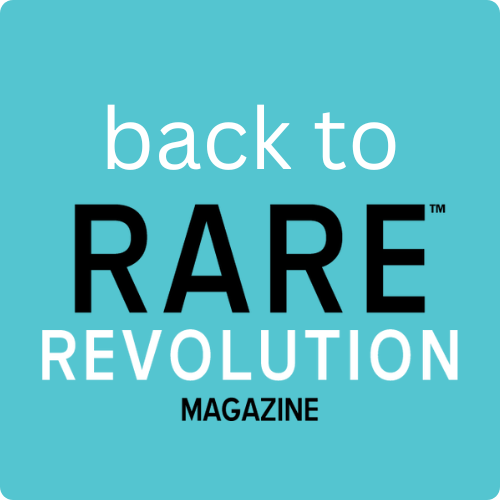incognito: the secret life of a…healthcare communications CEO
Bridging the gaps: driving unified communications in rare disease
Estimated reading time: 5 minutes

“I work in healthcare communications with a focus on rare diseases, helping pharmaceutical clients align medical, access, commercial, patient, and PR needs. My role is to connect stakeholders across disciplines and geographies to support the successful launch and adoption of treatments. From defining product value and improving disease awareness to educating patients and HCPs, I help deliver integrated solutions that ultimately support access to medicines for those who need them most.”
What is front of mind in your business currently?
What’s front of mind for us right now is how we can drive deeper connection and smarter collaboration in rare disease—both within the communities we serve and across the healthcare ecosystem.
Our mission in rare is to help close the persistent gaps in care, knowledge, access, and support. We’re constantly challenging ourselves to think bigger: How do we support global product launches in a space defined by complexity? How can we ensure our insights are not only strategic but grounded in the lived realities of rare communities?
From a healthcare communications perspective, data and technology are at the heart of how we move forward. We’re focused on how we use them to improve efficiency, drive better decisions and create more meaningful impact for patients, HCPs and clients alike.
At its core, our work is about connection—bringing together people, stories, science and solutions to help make rare less isolated, and more understood.
What are the greatest challenges you face as a CEO, what are your pain points and barriers to overcome?
In healthcare communications, one of the biggest pressures we face is delivering more for less. There’s a constant demand to demonstrate greater impact, faster—all while navigating budget constraints and making sure we’re supporting and empowering the talent within our agency.
For us, the rare disease space amplifies this challenge. It demands focus, empathy, and precision — yet the needs are vast and often competing. We find ourselves asking:
- How do we stay relevant and truly impactful in the work we deliver?
- How can we help drive meaningful, lasting change in rare disease?
- And how do we deepen relationships with the rare community to ensure we’re offering clients not just communications, but informed, purpose-driven insight?
One of our greatest barriers is resisting the urge to be everything to everyone. With so many stakeholders—patients, caregivers, advocacy groups, clinicians, industry—expectations can be high and sometimes misaligned. Our role is to find clarity amid that complexity: to prioritise, be transparent about our intentions, and focus on delivering work that is not only creative, but also genuinely moves the needle where it’s needed most.
What are the greatest opportunities yet to be realised or on the horizon for your business?
As technology evolves and data becomes more accessible, opportunities are everywhere. With AI and more integrated digital networks, we see huge potential to accelerate progress in key areas:
- Smarter, more accessible education: AI can help simplify complex science, making it easier for both healthcare professionals and patients to understand and act on critical information.
- Greater connectivity: We can better guide people affected by rare conditions to the right content, the right specialists, and the right communities—when they need it most.
- Amplifying lived experiences: Technology gives us the power to share patient stories more widely and meaningfully, helping create a louder, more unified voice to drive awareness and change.
- Earlier identification and intervention: From symptom trackers to diagnostic support tools, digital innovation offers new ways to catch signs of rare disease earlier and improve outcomes.
The future holds incredible promise—and by leaning into these opportunities with purpose and care, we can help reshape what’s possible for rare communities.
If you could create overnight change, what would it be?
If I could create overnight change, it would be to break down the silos that so often hold back progress in rare disease.
The rare space is full of passionate, empowered stakeholders—from patients and advocates to clinicians, policymakers, and industry. But despite the shared goal of improving lives, it’s still fragmented. There are politics, competing agendas, and micro-communities that don’t always connect. If we could foster deeper, more open collaboration across these groups, we could unlock far more impactful and scalable solutions.
This isn’t just about high-level policy or funding—though those are critical. It’s about co-creating the everyday: education, early identification tools, awareness campaigns, support programmes, communications strategies. All of these can be stronger when we build them with communities, not for them.
And importantly, that change needs to happen within pharma too. Breaking down internal barriers—between medical, marketing, access, advocacy, corporate affairs—and encouraging cross-functional collaboration beyond brands could drive the kind of unified, values-led approach rare communities truly need.
Real change in rare can only happen when we move forward together.
What is the next ‘go-to’ event in your diary and why?
The next key event in my diary is World Orphan Drug Congress (WODC)—a standout congress that brings together a truly diverse range of stakeholders across the rare disease ecosystem.
It’s an invaluable opportunity to stay close to what matters most right now—from the latest policy developments and research breakthroughs to innovation in access, diagnostics, and patient engagement. WODC always offers a unique blend of strategic insight and real-world perspective, making it a must-attend for anyone working to drive meaningful change in rare.
incognito provides a candid look behind corporate closed doors of the RARE disease world.
To access more incognito articles click below.


